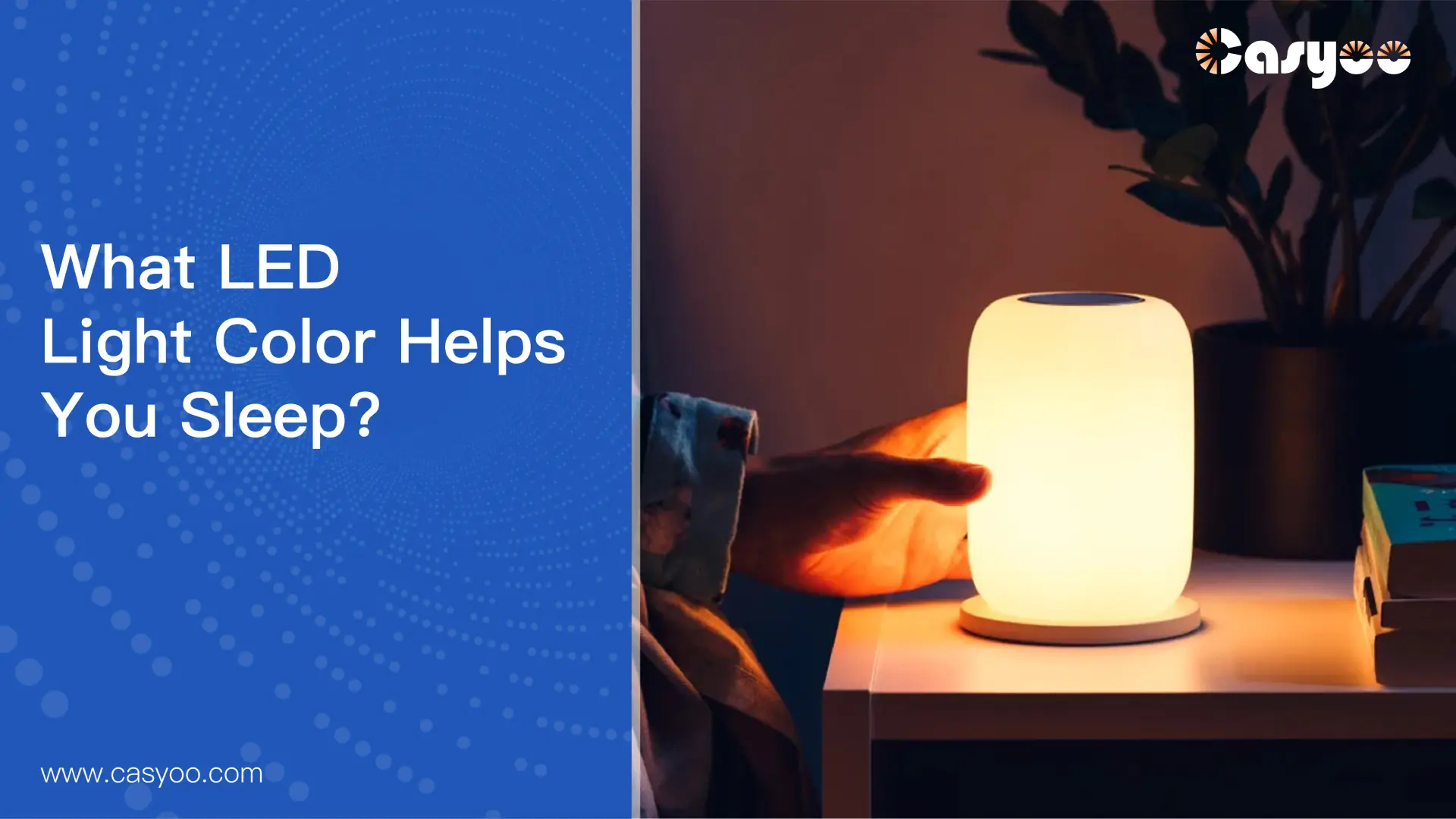We frequently came across words telling us not to be around bright colors soon before bed. Indeed, some colors of light aid in sleep. This is due to the fact that the melatonin hormone plays a vital role in our body’s sleep cycle. So how does light impact our sleep, and what LED light color can help you sleep?
How Does Light Affect Sleep?
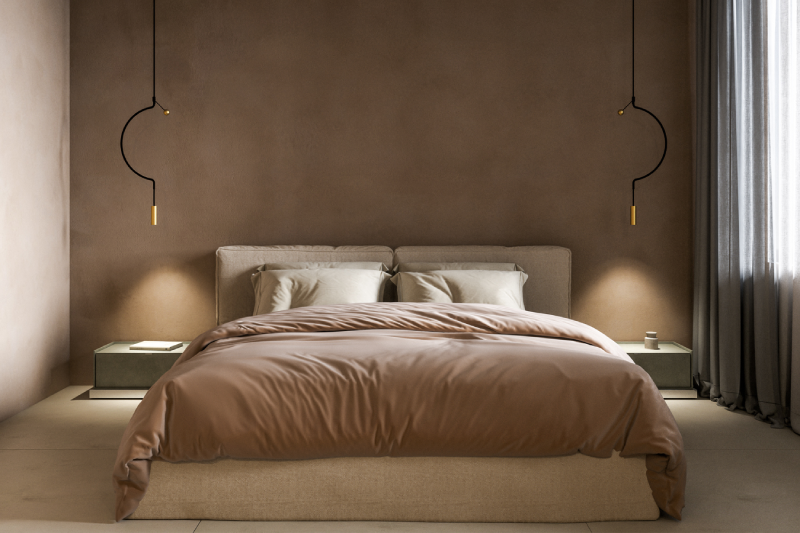
Light greatly influences the circadian rhythm, which is the biological clock to controls when we need to sleep. This clock runs on a 24-hour cycle. The body knows when to wake up when it’s bright outside, and it prepares for sleep when it’s dark.
The body receives its cue to wake and sleep from the rhythm of the sunrise and sunset. Specifically, a setting sun’s warm light may aid indicate when it’s time to sleep. Artificial lights are often used after sunset, which disrupts the circadian rhythm and leads to sleep disorders like insomnia.
The natural hormone that promotes sleep, melatonin, is similarly influenced by light. In reaction to darkness, the brain’s pineal gland releases melatonin. However, some forms of light such as blue light, can inhibit the production of melatonin.
What LED Light Color Is Bad for Sleep?
Cool-colored LED light colors will make it hard for the body to fall asleep, in contrast to warm colors that might aid in sleep. Cool light may keep you awake at night since it promotes focus and attentiveness.
Blue light
Blue light has a special effect on circadian rhythm, influencing light receptors in the eye. In addition to suppressing melatonin, blue light helps the body stay awake. Frequent exposure to blue light at night causes the body to believe that it is still daytime, which can interfere with circadian rhythm and lower the quality of sleep.
Green Light
It also lessens drowsiness by decreasing melatonin production, much like blue light does. Green light may still be best avoided before bed, even if blue light can lower melatonin levels twice as much as green light.
What LED Light Color Is Best for Sleep?
Red and amber light are the ideal night light colors for sleep because they are calming and pleasant hues that encourage restful sleep. It is believed that colors that are near red in the spectrum encourage the synthesis of melatonin. Red light is the most ideal color for sleep since its color temperature is lower than normal sunlight. Red light is the ideal way to transition from day to night without disturbing your sleep cycle because it has a low color temperature and our brains do not react as strongly to its wavelengths.
Amber light
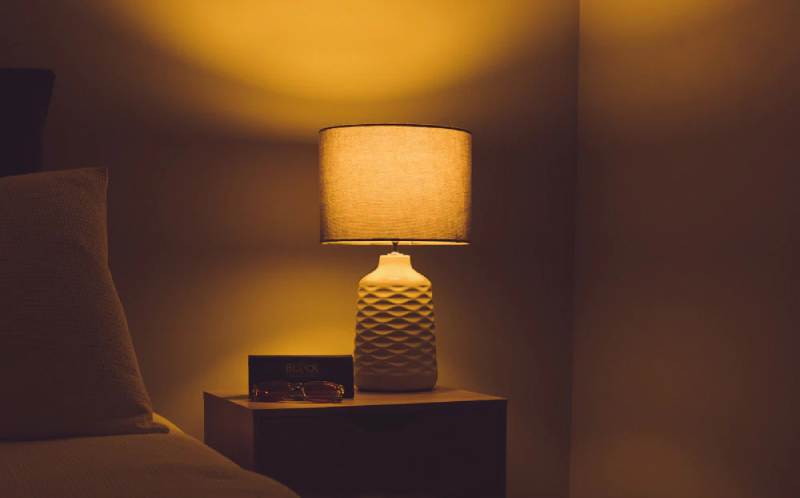
Amber light encourages the secretion of melatonin and makes us feel more at ease. Using amber LED lighting in your home can shield your eyes from damaging blue light while also making it easy for you to fall asleep. Amber light resembles the amber wavelength of candlelight, it’s a very relaxing color that helps you go to sleep fast.
Red light
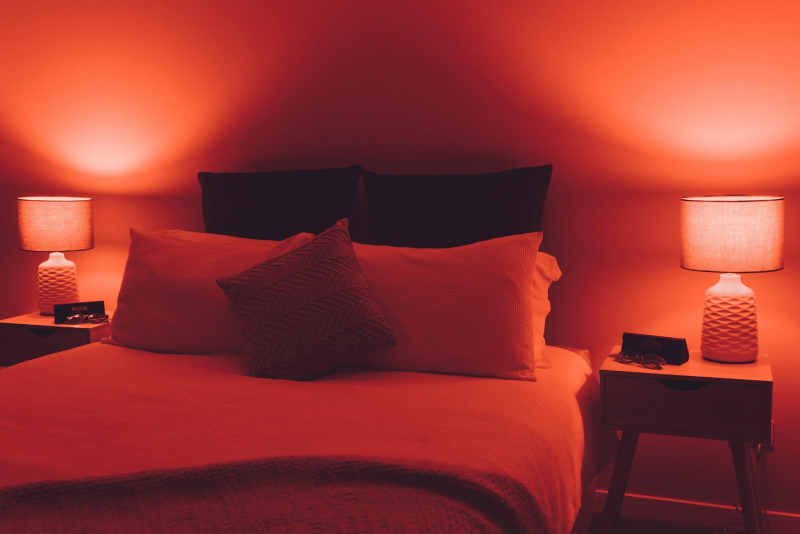
The most relaxing LED light color for sleeping is by far red. Selecting a red light for your nightlight guarantees that you won’t interfere with your circadian rhythm. Therefore, using a red light a few hours before bed will undoubtedly make it easier for you to fall asleep. Moreover, red light is more conducive to falling back asleep throughout the night than blue or green light, if you wake up during the night.
So why is red light the ideal light color for sleep? The photosensitive cells in our eyes sense light and send messages to our brains by being sensitive to various wavelengths. According to a recent study, our eyes are most sensitive to blue and green light, signaling our brains that it is daytime. As a result, melatonin secretion is inhibited and our internal biological clock becomes confused.
Selecting the Appropriate LED Light Color for Various Spaces
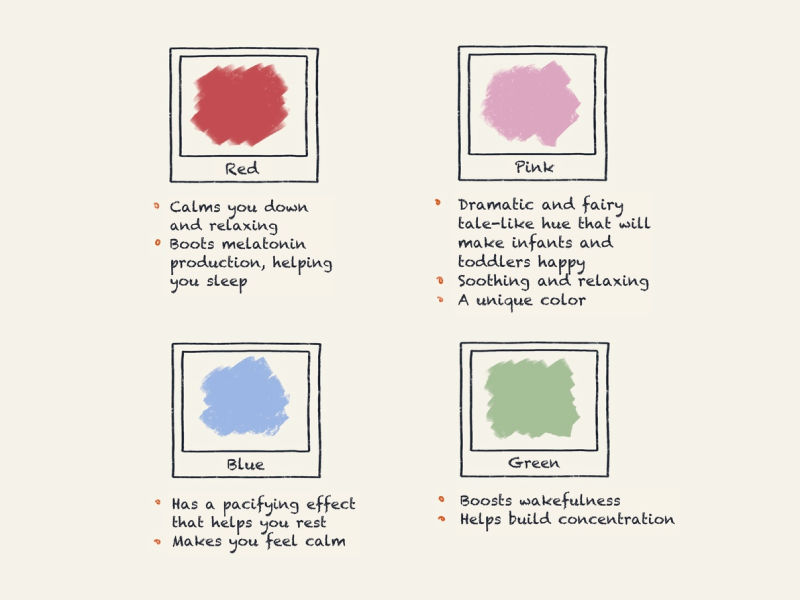
- Bedrooms: Red or amber LED lights work well in bedrooms. They complement the body’s innate sleep cycles and foster a calming environment that is beneficial to sleep.
- Offices and living rooms: Although not the best places to sleep, employing lighting with programmable color temperatures can facilitate the change from an active to a restful state. An amber light in the evening can help the body get ready for sleep.
- Children and Babies room: Soft red, amber, or pink night lights are advised for infants and children since they encourage relaxation without upsetting the sleep-wake cycle.
- Wakefulness: In the morning, brighter lights like white and bright blue can be employed to promote alertness and let the body know it’s time to wake up.
Conclusion
It is essential to understand the relationship between light and sleep to form an environment that promotes sleep. Choosing the right LED light color can greatly improve the quality of your sleep.
Stay lighted with the newest LED technology with Casyoo. Come together with us now and let Casyoo lights illuminate your room!

